Santa Marta - Gateway to the Sierra Nevada
Friday, March 18, 2016
 Santa Marta, Colombia
Santa Marta, Colombia
One of my initial impressions of Colombia is that it is a
relatively advanced country for a part of the world that is still usually
categorized as “developing” . The cities have a lot of modern buildings and
people living apparently middle class lifestyle standards. The infrastructure
seems reasonably good as well. The current level of prosperity in Colombia is
somewhat surprising since within my memory fifteen to twenty years ago the
country was virtually a failed state of civil war and narco-terrorism. Colombia
has rapidly recovered since the violence of the 1990s with moderate but steady
economic growth and diversification, a huge contrast with next-door Venezuela
that’s spent the same era descending rapidly into anarchy and poverty under
Democratic Socialists Hugo Chavez and Nicholas Maduro.
I took a shuttle van arranged by the hostels in Cartagena
for the 150 miles of so to Santa Marta and in many places got to see another
side of Colombia, the very poor mostly Afro-Colombian rural communities along
the coastal road. With sugarcane plantations the big industry in the region
during colonial times, northern Colombia was a region where a large number of
slaves were brought in to work giving the area a large population of African
ancestry. The gap in income in Colombia seems comparable almost to that of
Brazil.
Along the way the bus circled around Barranquilla, an
industrial port that is Colombia’s fourth most populous city with well over a
million people. Barranquilla is supposed to have the biggest Carnival in South
America outside of Brazil but have virtually nothing to see the rest of the
year . The scenery gradually became drier farther east toward Santa Marta to the
extent that the dry forest of trees mostly leafless near the end of the dry
season gave way in spots to cactus forests.
Santa Marta is the oldest settlement in Colombia and South
America and with a population of nearly half a million is the third largest on
the Caribbean coast. Despite its long history there isn’t very much to see in
Santa Marta, but it’s usually used as a base for treks to La Ciudad Perdida and
to the nearby beaches at Taganga and Tayrona National Park. Its seaside
location makes it popular with Colombians for beach holidays, but most foreign
tourists head for more remote spots to go to the beach.
I recall watching a documentary about the Sierra Nevada de
Santa Marta and the Lost City many years ago and was fascinated that the small
mountain range that’s entirely separate from the Andes contains the highest
peaks in Colombia at around 19,000 feet. The Sierra is considered to be the
highest coastal mountain range in the world with the permanently snow covered
peaks less than thirty miles from the sea and sometimes visible from the coast
and the city of Santa Marta. The documentary was made and aired during the bad
old days of the 1990s, and I recall it making a contrast between the natural
world of the mountains and the indigenous people living peacefully in them and
the hell that was the city of Santa Marta, a city it said had one of the
world’s highest murder rates.
Nowadays, though, Santa Marta is reasonably safe and
peaceful. Despite there not being much to see there I ended up spending four
non-consecutive nights in the city before, between, and after the trips I
booked to the Guajira Peninsula and the Ciudad Perdida Trek before catching an
overnight bus to Medellin. I stayed in a centrally located hostel which was
quite nice and found a very good Greek restaurant named Ouzo on of its
attractive colonial squares where I splurged on some very good non-Colombian
food.
Other Entries
-
26Natural Granada - Volcan Mombacho & Las Isletas
Feb 2324 days prior Volcán Mombacho, Nicaraguaphoto_camera74videocam 0comment 0
Volcán Mombacho, Nicaraguaphoto_camera74videocam 0comment 0 -
27Managua - The Totally Failed Compromise Capital
Feb 2621 days prior Managua, Nicaraguaphoto_camera58videocam 0comment 0
Managua, Nicaraguaphoto_camera58videocam 0comment 0 -
28Around Granada - Pueblos Blancos, Cemeteries, etc.
Feb 2720 days prior Catarina, Nicaraguaphoto_camera48videocam 0comment 0
Catarina, Nicaraguaphoto_camera48videocam 0comment 0 -
29Ometepe Island - Mountain Bike Ride From Hell
Mar 0117 days prior Ometepe Island, Nicaraguaphoto_camera40videocam 0comment 0
Ometepe Island, Nicaraguaphoto_camera40videocam 0comment 0 -
30Bike Ride Around Arenal Reservoir
Mar 0315 days prior Tilaran, Costa Ricaphoto_camera47videocam 0comment 0
Tilaran, Costa Ricaphoto_camera47videocam 0comment 0 -
31La Fortuna - In the Shadows of Arenal
Mar 0414 days prior La Fortuna, Costa Ricaphoto_camera50videocam 0comment 0
La Fortuna, Costa Ricaphoto_camera50videocam 0comment 0 -
32Bike Ride Through the Marvelous Orosi Valley
Mar 0513 days prior Turrialba, Costa Ricaphoto_camera57videocam 0comment 0
Turrialba, Costa Ricaphoto_camera57videocam 0comment 0 -
33Costa Rican Caribbean - Cycling to Panama
Mar 0612 days prior Puerto Viejo, Costa Ricaphoto_camera7videocam 0comment 0
Puerto Viejo, Costa Ricaphoto_camera7videocam 0comment 0 -
34Bocas Del Toro - Caribbean Island Paradise
Mar 0711 days prior Bocas Town, Panamaphoto_camera71videocam 0comment 0
Bocas Town, Panamaphoto_camera71videocam 0comment 0 -
35Western Panama - Bike Ride from Divide to Pacific
Mar 0810 days prior Gualaca, Panamaphoto_camera24videocam 0comment 0
Gualaca, Panamaphoto_camera24videocam 0comment 0 -
36Bike Ride Through Cattle Country and the Beach
Mar 099 days prior Santiago, Panamaphoto_camera14videocam 0comment 0
Santiago, Panamaphoto_camera14videocam 0comment 0 -
37Panama Canal - Century Old Engineering Marvel
Mar 108 days prior Miraflores, Panamaphoto_camera57videocam 0comment 0
Miraflores, Panamaphoto_camera57videocam 0comment 0 -
38Casco Viejo - Panama City's Gentrifying Old Town
Mar 117 days prior Panama City, Panamaphoto_camera96videocam 0comment 0
Panama City, Panamaphoto_camera96videocam 0comment 0 -
39Panama City - Like Miami Except With More English
Mar 126 days prior Panama City, Panamaphoto_camera103videocam 0comment 0
Panama City, Panamaphoto_camera103videocam 0comment 0 -
40San Blas Islands - Sailing Through the Caribbean
Mar 135 days prior El Porvenir, Panamaphoto_camera71videocam 0comment 0
El Porvenir, Panamaphoto_camera71videocam 0comment 0 -
41Sailing to Colombia on the M/S Quest
Mar 153 days prior El Islote, Colombiaphoto_camera57videocam 0comment 0
El Islote, Colombiaphoto_camera57videocam 0comment 0 -
42Old Cartagena - Jewel of Spanish Caribbean
Mar 171 day prior Cartagena, Colombiaphoto_camera150videocam 0comment 0
Cartagena, Colombiaphoto_camera150videocam 0comment 0 -
43Santa Marta - Gateway to the Sierra Nevada
Mar 18 Santa Marta, Colombiaphoto_camera36videocam 0comment 0
Santa Marta, Colombiaphoto_camera36videocam 0comment 0 -
44Ciudad Perdida Trek Part I - Four Days on Trail
Mar 202 days later Don Diego, Colombiaphoto_camera84videocam 0comment 0
Don Diego, Colombiaphoto_camera84videocam 0comment 0 -
45Ciudad Perdida Trek Part II - The Lost City
Mar 213 days later La Ciudad Perdida, Colombiaphoto_camera55videocam 0comment 0
La Ciudad Perdida, Colombiaphoto_camera55videocam 0comment 0 -
46The Guajira Peninsula - Northernmost South America
Mar 257 days later Punta Gallinas, Colombiaphoto_camera90videocam 0comment 0
Punta Gallinas, Colombiaphoto_camera90videocam 0comment 0 -
47Medellin - City of the Eternal Spring
Mar 2810 days later Medellin, Colombiaphoto_camera107videocam 0comment 0
Medellin, Colombiaphoto_camera107videocam 0comment 0 -
48Medellin - Innovation in Transportation
Mar 2911 days later Medellin, Colombiaphoto_camera48videocam 0comment 0
Medellin, Colombiaphoto_camera48videocam 0comment 0 -
49El Poblado - Medellin's Zona Rosa
Mar 3012 days later Medellin, Colombiaphoto_camera55videocam 0comment 0
Medellin, Colombiaphoto_camera55videocam 0comment 0 -
50Santa Fe de Antioquia - Colonial Era Beauty
Mar 3113 days later Santa Fe de Antioquia, Colombiaphoto_camera78videocam 0comment 0
Santa Fe de Antioquia, Colombiaphoto_camera78videocam 0comment 0 -
51Fat is Beautiful - The Art of Fernando Botero
Apr 0114 days later Medellin, Colombiaphoto_camera127videocam 0comment 0
Medellin, Colombiaphoto_camera127videocam 0comment 0 -
52Bogota - Colombia's Megacity Capital
Apr 0215 days later Bogota, Colombiaphoto_camera67videocam 0comment 0
Bogota, Colombiaphoto_camera67videocam 0comment 0 -
53March Against FARC - Thousands Rally in Colombia
Apr 0215 days later Bogota, Colombiaphoto_camera87videocam 0comment 0
Bogota, Colombiaphoto_camera87videocam 0comment 0 -
54Art, History, Anthropology -Bogota's Great Museums
Apr 0316 days later Bogota, Colombiaphoto_camera68videocam 0comment 0
Bogota, Colombiaphoto_camera68videocam 0comment 0 -
55Museo de Oro - Colombia's Most Famous Museum
Apr 0316 days later Bogota, Colombiaphoto_camera52videocam 0comment 0
Bogota, Colombiaphoto_camera52videocam 0comment 0 -
56La Candelaria - Bogota's Old Town
Apr 0316 days later Bogota, Colombiaphoto_camera82videocam 0comment 0
Bogota, Colombiaphoto_camera82videocam 0comment 0 -
57Zipaquira - Cathedral in a Salt Mine
Apr 0417 days later Zipaquira, Colombiaphoto_camera63videocam 0comment 0
Zipaquira, Colombiaphoto_camera63videocam 0comment 0 -
58Last Day in Colombia -Obligatory Coffee Finca Tour
Apr 0518 days later Fusagasuga, Colombiaphoto_camera39videocam 0comment 0
Fusagasuga, Colombiaphoto_camera39videocam 0comment 0

 Santa Marta, Colombia
Santa Marta, Colombia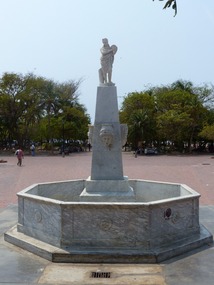
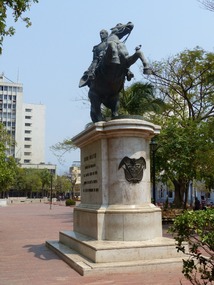




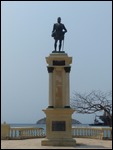

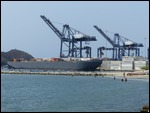
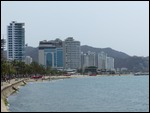
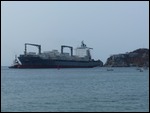
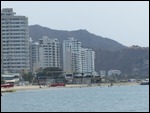
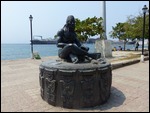
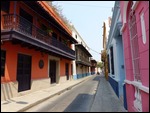
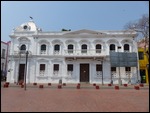
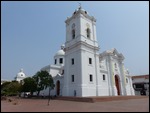
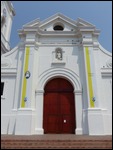

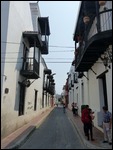
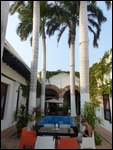
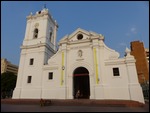
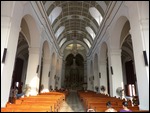
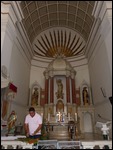
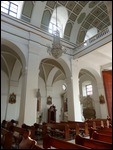
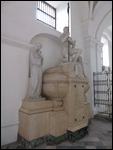
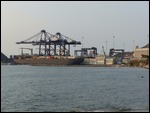
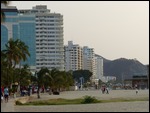
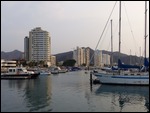
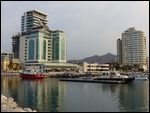
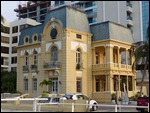




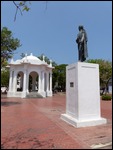
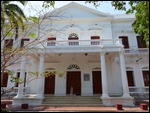


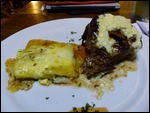
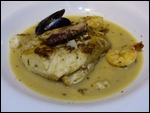
2025-05-22